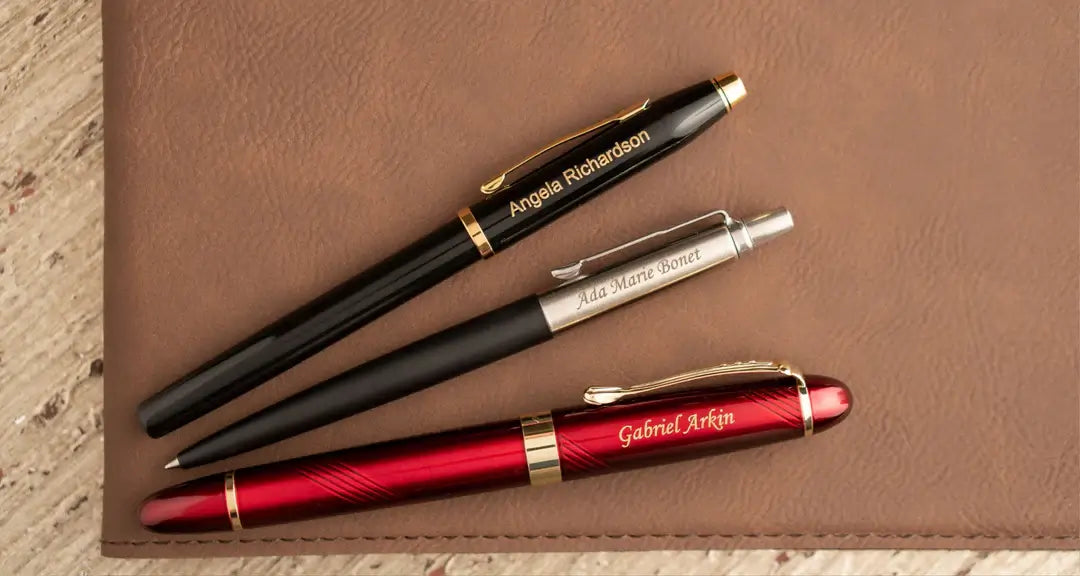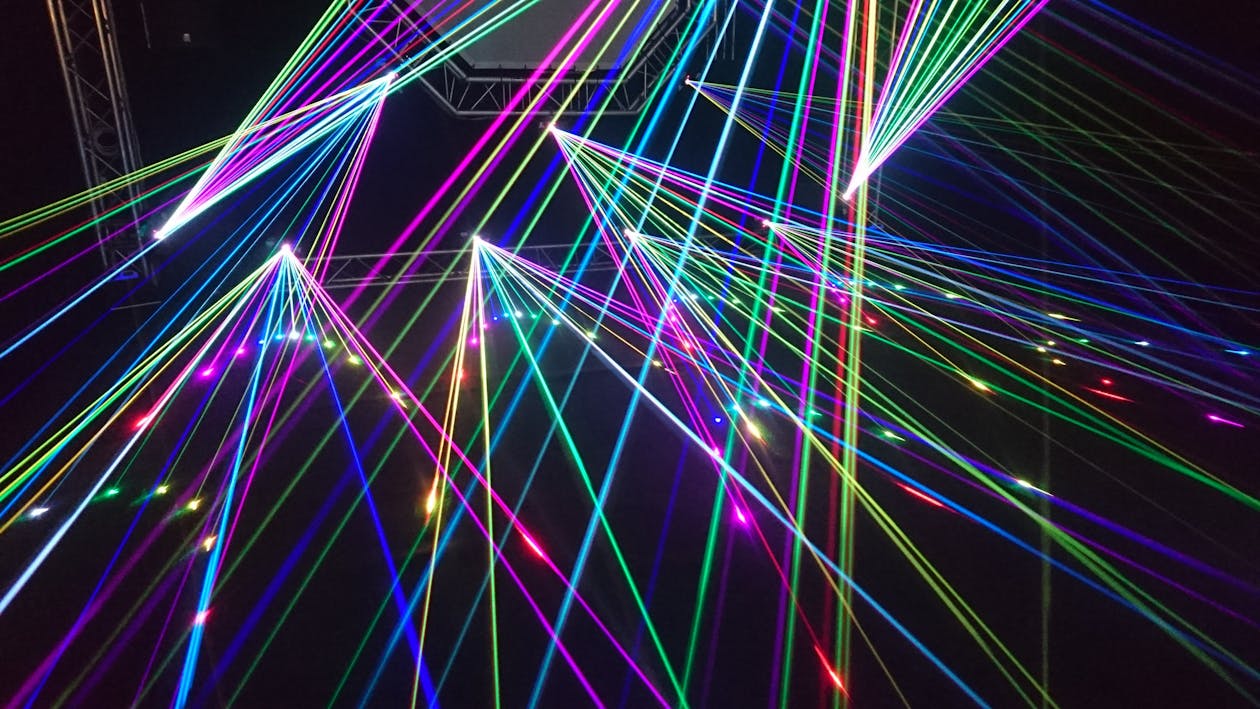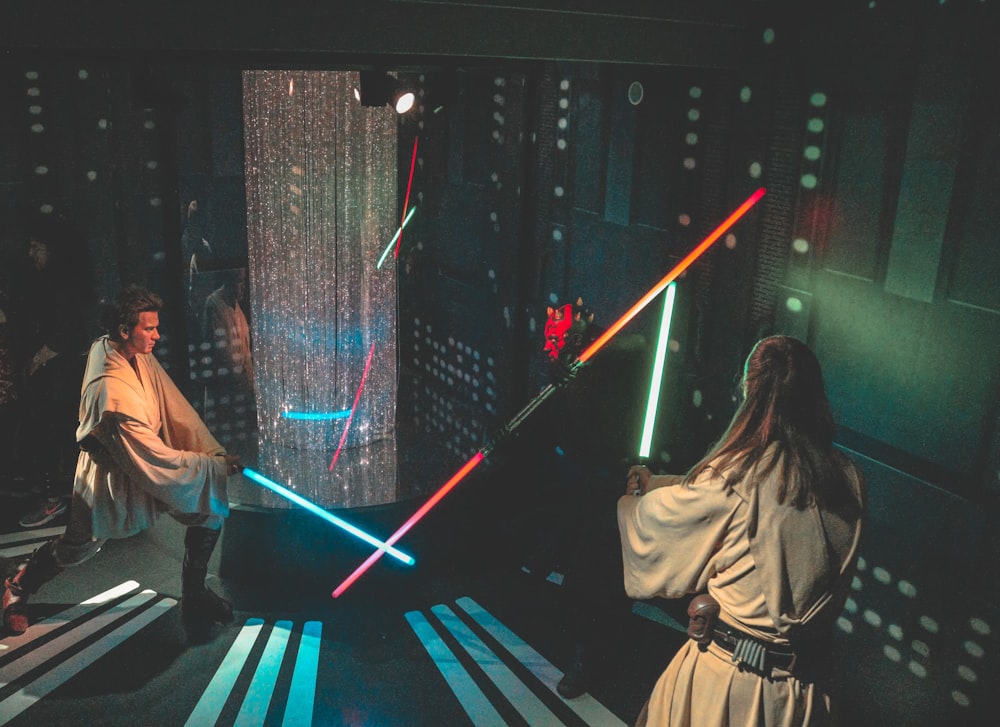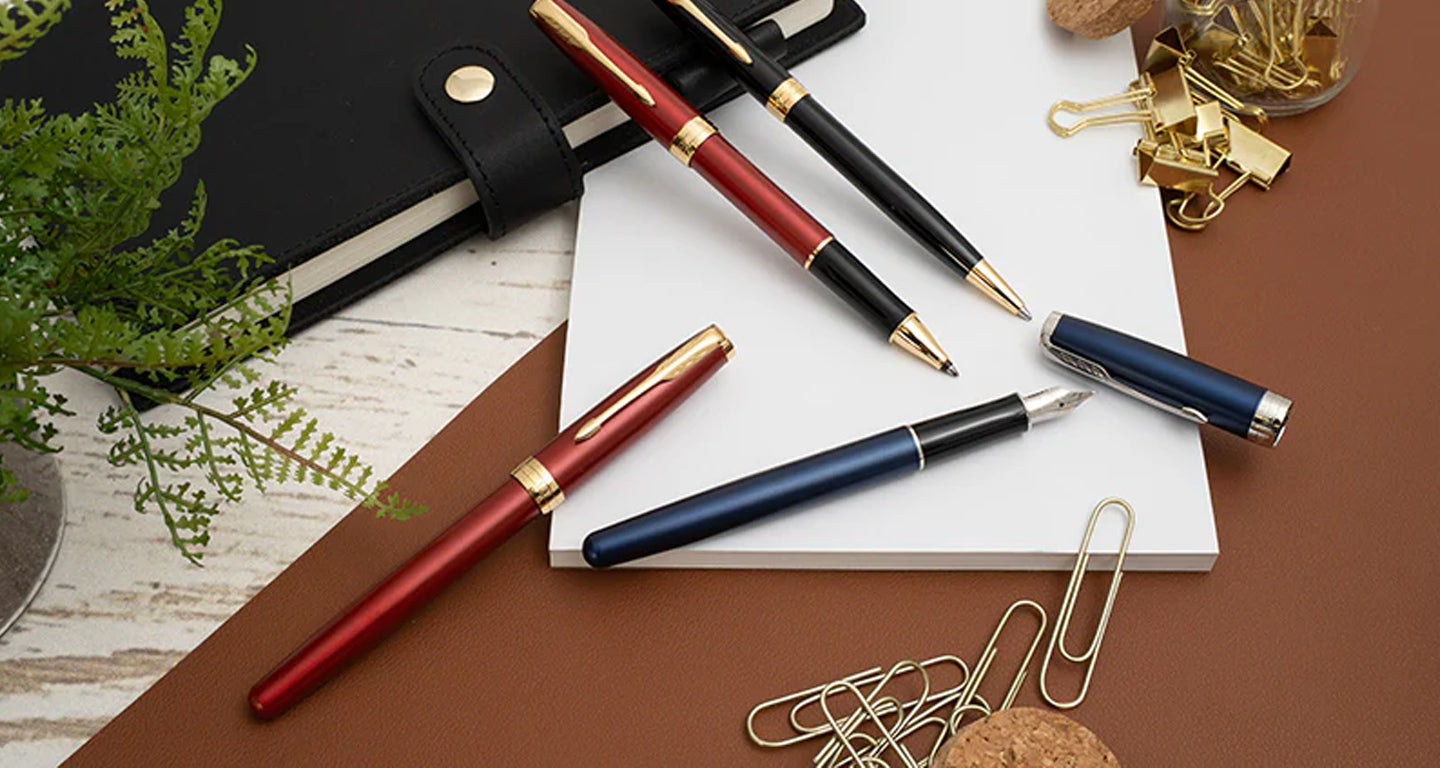
What Is Laser Engraving?: The Ultimate Guide
In this article, I'll introduce you to the entire process of engraving. Specifically focusing on laser engraving and how it works.
It might seem like a complex, in-depth, hyper-involved process, but it's actually very simple.
I'll discuss the basics of laser engraving, how it works, and show you why they make every gift so much more special.
What is laser engraving?
General engraving is the process of cutting or carving a design into a hard material.
However laser engraving is doing the same process with a super-focused beam of light.
An Incredibly Brief History of Engraving...
Engraving was the method used to start the whole process of decorating as one stone was used to mark another. The world's oldest engraving actually dates back 500,000 years ago to a doodle!
Fast forward to 3000 BC, the Sumerian and the Hittite elite began engraving intricate seals in stones and precious gems. Much like today, engraving in the ancient world was used to decorate and design.
In the 1400s the process of engraving became integral to recreating documents and artwork. As pieces of wood were carved, the raised portions were coated in paint or ink and pressed into paper or cloth to duplicate an image.
(The Printing Press was essentially a whole bunch of small engravings arranged into sentences and pressed onto pages. Huzzah for Gutenberg!)
However, with major technological leaps and the invention of the computer, engraving moved back into the realm of decoration.
So what does engraving look like in our modern world? Let's talk about lasers...
Aren't lasers just something from Star Wars?
Whenever someone says the word "laser", my first thought is either of the lightsabers in Star Wars or James Bond's Q-built gadget watch.
While those films make lasers look really cool and dangerous, they're more often than not just helpful tools performing a bunch of simple, harmless tasks.
You don't have to be 007 to have a laser; we use them every day!
They're especially good at popping balloons, but you shouldn't try the things you see in this video at home.
Of particular interest to us, however, is a laser's capacity to cut, etch, engrave, or mark various materials. That is to say, its ability to personalize and decorate.
But how do they work?
How do lasers work?

The word "laser" is actually an acronym for "Light Amplification by Stimulated Emission of Radiation."
Verrrrry simplified...light is concentrated over and over again to create a powerful beam. There are three major factors to how this works: Concentration, Energy, and Direction.
Concentration
- Light moves in waves—up and down, so to speak.
- A normal light has a bunch of different, varying wave lengths.
- Now, focus all of the wavelengths so that they don't cross over each other, but instead line up perfectly with each other.
- The concentration of light waves cuts out all the extra waves that cross over each other. This is what makes that cool, mesmerizing beam of red light. (You can see the whole beam if you crank up a smoke machine. Otherwise, it's just that little red dot that cats just NEED to catch.)
- This also means that laser light can become extremely powerful and can be focused on a singular point.
Energy
Chris Woodford has a great explanation:
You've probably noticed that if you move your hands back and forth in the bathtub you can make quite strong waves. If you keep moving your hands in step with the waves you make, the waves get bigger and bigger. Imagine doing this a few million times in the open ocean. Before long, you'd have mountainous waves towering over your head! A laser does something similar with light waves. It starts off with weak light and keeps adding more and more energy so the light waves become ever more concentrated.
Give a power source to move those single wave lengths perfectly in time with one another and bam! you have added energy to your concentrated light beam.
Direction
The last major part of laser light is that it is directional. Unlike a flashlight which diffuses white light evenly across a space, laser light creates a tight beam that can travel much farther distances. Breaking out the fancy terms: it is highly collimated (travels parallel instead of zigzagging).
For a more in depth look at the science of lasers, check out this amazing, in-depth video.
Laser light can be invisible to the human eye. In fact, a lot of common uses for laser light require light to be invisible instead of burningly bright in order to minimize the risk of what doctors (probably) call "eyeball meltage" or simply "arson."
Here's another great video from EngineerGuy on how lasers work:
What are lasers used for?
The unique properties of laser light allow them to perform a whole array of diverse tasks. However, the FDA has a big list of uses (and cautions) for lasers:
- reading disks (Blu-Ray, DVDs, CDs)
- measuring distances and speed
- reading barcodes
- industrial manufacturing
- scanning documents in a printer
- getting yelled at by your mom for shining it into your brother's eyes (maybe not on the FDA list)
- performing complex medical procedures
- cutting precious gems
You can even make holograms with lasers:
Why are lasers dangerous?
The wavelengths of laser light can be focused on a single point. If enough energy is added, they can burn almost any material.
The intensity of the light can also damage your eyes if you look directly into it, so using protective glasses is often a must when handling high-powered lasers.
One last safety consideration is the sound made when a laser beam hits an object. Powerful laser beams often emit a high pitched sounds when coming in contact it particularly hard materials such as chrome. Take precautious to wear protective ear coverings when using a laser in this way.
What stops a laser beam?
The easiest and best way is to remove the energy source by either unplugging it, taking out batteries, or switching off the power.
If, for instance, a bad guy has a laser gun pointed at you, grab the nearest mirror to deflect the beam of light away from you. Preferably back onto the mustachioed, dastardly villain.
You can also simply block the laser with another object. If its a high-powered laser, you will want a hard, heavy metal around to do this.
| Related Reading: Engraved Personalized Gift Ideas |
What is a laser engraver and how does it work?
Laser engraving machines are specifically designed for cutting, etching, marking, and engraving hard materials, automating the process through the use of computer software.
You probably see items engraved on a laser engraver all the time without realizing it. Take a look at just about any plaque on a trophy or the signs on the office doors in your workplace. These are more than likely the product of a laser engraving machine.
There are a bunch of different kinds of laser engraving machines like the Dremel LC40 and the RMI UF-20, and a lot of them have different strengths and weaknesses as far the shape and material of the thing you want engraved.
How do laser engraving machines work?
First, check out this video of an engraving machine printing out some trippy visuals:
Now, let's talk about it.
Laser engravers are specifically designed to focus laser light for the purpose of marking wood, metal, glass, or some other material with a preselected engraving—often images or script.
The machine uses lasers to produce concentrated heat that removes the top layer of material, cutting it from an item to create the desired design.
Using powerful lasers and mirrors, the machine reflects a laser beam onto a surface of an object.
The light is focused at the right distance and set to the right power level in order to leave a mark. Too little power and it will not end up cutting into the material, too much and you can burn through the object.
Some lasers (like the GCC Spirit LS machine) are mounted on a track and make passes over the desired engraving area similar to how your ink printer prints on paper. The pro of this kind of laser is you can engrave larger areas.
Others lasers (like the RMI UF-20) are stationary and focus on a smaller surface area. The pro of this laser type is it tends to engrave faster at higher powers.
What is the engraving process on the machines?
Laser engraving machines can have a number of different processes for engraving, but for the most part:
- The engraving design is keyed into a computer software like CorelDraw.
- The object to be engraved is placed within the laser tray.
- The laser engraving machine is then properly focused on the surface of the object.
- The power of the laser beam is set depending on the solidity of the material (whether wood, steel, gold, etc.).
- The laser operator starts the selected engraving process on the computer.
- The machine activates the laser and passes its over the desired marking area on the surface of the object.
- The engraving is removed from the machine once it is completed, and engraving residue (soot, metal shards, etc.) is removed from the surface of the object.
- Voila!
Here's a video from Trotec on how some laser engraving machines work:
How long does it take to Laser Engrave?
The easy answer: Laser engraving takes about 3-5 minutes.
The real answer:
Laser Engraving can take anywhere from 5 seconds to multiple hours. However, you need to consider quite a few factors including the material being engraved, the size of the design, and the power of the laser, to name a few.
If you want to laser engrave an item, always check the engraving company's timeline.
While the engraving process might be quick, preparing the engraving involves multiple, longer steps like rendering the design into the computer software, prepping the material, and removing any unwanted residue after engraving.
What kinds of things can be engraved?
Pretty much anything can be engraved.
- Metal
- Wood
- Glass
- Plastic
- Leather
- Fiber
As long as it's a hard surface, there's a good chance it can be engraved.
What has to change across different materials is the power of the light and the number of pulses of light per inch (PPI).
Softer materials like wood or plastic need less power and less PPI for clear marking. Using too much power can burn through the thing you're trying to customize; using too much or too little PPI can leave an ugly burn.
Tougher materials like steel require a bit more power and PPI in order to leave a mark.
You want to optimize the balance between power and PPI to the material's characteristics so that the burn appears clean without damaging the object you're engraving.
But there's also a lot of wiggle room for the power settings of a laser engraver so that you can really hone in on the quality of engraving that works for you.
| Learn More: What Can Be Engraved? |
Will an engraving wear off?
Short answer: No. Engravings are permanent and, therefore, removing them would be like getting a Nickelback song out of your head.
This comes down to the fact that engraving cuts into the surface of the object instead of printing on top of it.
The caveat is that the time might erode an engraving, or someone might refinish a material to remove the engraving.
The 500,000 year old engraving we talked about at the beginning of the article would be an example of erosion. Even though the engravings are still visible, time and the elements have worn them down so they are not as prevalent as when they were first done.
You could also refinish something to remove an engraving. For instance, if you sand down an engraving enough, you will end up with an undecorated piece of wood or metal. Like a Creed song.
Material will be the most important consideration if you are worried about your engraving wearing off. The harder the material, the less likely it will be to wear with time. Soft metals like gold will erode faster than tungsten.
How does custom engraving work?
So now you know the process of how engraving itself works. Let's talk a little bit about the process of customization (aka the fun part!).
A laser engraver can be quite expensive, so there are quite a few companies out there who have the machines and are willing to do custom work for a fee. Two types of businesses focus on engraving: one that sells specific products for engraving while the other primarily focuses on engraving.
Custom Products
Companies that sell custom products have specific items already manufactured and ready to be personalized. Think getting your Apple Watch engraved or buying something from Things Remembered.
Say you are looking for a gift for your groomsmen and you'd really like to get them tie clips with their names engraved on them. Searching custom engraved tie clips will bring you a whole slew of companies from small Etsy shops to Gucci that have a selection of tie clips in stock. You just have to let them know what you would like engraved and badabing badaboom! A tie clip that says "Michael Smith: BestMan4Lyfe".
Companies selling customizable products focus on a specific market of materials they can engrave.
As we discussed earlier, you must determine the power, distance, and length of exposure for each material you engrave with laser engravers.
By having these materials on hand, the company is able to easily execute engravings to the settings they have predetermined. This take the majority of the risk out of the engraving process for the business.
These companies are also great for generating personalized gift ideas. If you know you want to get somebody a personalized gift, but aren't sure what to get, these companies will often have wide selections great for brainstorming.
Custom Engraving
Now the other side of the personalized engraving world is businesses that do not necessarily maintain specific stock. They will custom engrave items that you bring to them.
Examples: You have a piece of wood from the first house you every lived in or your grandmother's watch and you would like to add an engraving.
The company faces a greater risk with this type of engraving because every engraving potentially requires its own unique settings to operate the laser properly.
Keep in mind, this type of engraving is much more likely to have a pricier bill and will have a higher chance of not turning out exactly as imagined. But it can also be truly amazing to have something sentimental and unique engraved and repurposed.
If you are looking for a company to do this kind of work you can either find them online by searching for Custom Laser Engraving or check for what is around you locally. Many companies that do this kind of work service local areas so they can evaluate the materials and requests in-person before taking the job.
What should you get custom engraved?
Now that you have found the item you want to personalized, how do you decide what to get engraved on it? Check out our other articles on Engraving Quotes, Engraving Fonts, and Engraved Handwriting that might help you brainstorm ideas and find what right for you!
What does Dayspring Pens laser engrave?
Now we have talked quite a bit about the whole process of custom engraving and we are just gonna give a little shout out to our own side of the Personalized Laser Engraving World.
Dayspring Pens is a personalized gift company, and we specialize in engraving luxury pens.
We also perform a laser engraving on some other products like Z-Bolt laser pointers and Desk Sets.
We love what we do and that's laser engraving.
It's science-y-ish and means we get to help gift personalized gift for your loved ones all year 'round. (which definitely gives warm fuzzies). It also means we may know a bit about pens. Maybe too much. I kind of wish I didn't have such an intimate knowledge of pen refill compatibility...
Anywhoo! Here is a little bit about our engraving process and what to expect.
How we laser engrave metal pens
 We use a YAG Laser Engraver for all of out metal items. (YAG stands for Yttrium, Aluminum and Garnet crystals.) The YAG is ideal for metal materials since it produces a smaller, more concentrated wavelength that will penetrate harder surfaces.
We use a YAG Laser Engraver for all of out metal items. (YAG stands for Yttrium, Aluminum and Garnet crystals.) The YAG is ideal for metal materials since it produces a smaller, more concentrated wavelength that will penetrate harder surfaces.
Here are the steps of our process:
- Using the computer software Symbol Writer Pro, we select a template matching the type of metal pen we are engraving (chrome, gold, stainless steel).
- We place the pen in the engraving tray and focus the laser beam to the correct height.
- Using copy and paste to make sure our engraving is correct to customer request, we prepare the text or design in the software.
- Once the engraving is properly positioned on the pen, we start the engraving process.
- In about 10 seconds we have our personalized pen! Polish, pack it up, and send it off!
How We Laser Engrave Wood Pens
For our wooden items (mostly a pen and a wood case), we use a C02 Laser Engraving Machine which better handles organic materials like wood, acrylic, rubber, etc.
The step by step process of the C02 laser engraver is almost identical to the YAG. The major differences are the computer software program (CorelDraw), the time it takes to engrave (C02 engravers take 2-7 minutes), and the polishing process.
Since we engrave organic materials like wood, we fill the engraving to accentuate it.
Time To Put Laser Engraving to Work
All in all, that is the process of personalized laser engraving.
What is engraving? How does laser engraving work? What is a laser engraving machine? How is custom engraving done? These are all just some of the questions we have touched on.
If you have more questions, are curious about more of the process, or have an engraving idea, then leave a comment below!
|
Sam Di Nardo is an author for Dayspring Pens, where she has honed her expertise in ballpoint, rollerball, gel and fountain pens since joining the team in 2018. From her initial role as an Engraver to becoming the Production Manager, Sam's journey has been marked by her passion for the history, manufacturing, and the unique value of gifted writing instruments. A graduate of Regent University with a degree in English Literature and a special interest in Old Norse literature, dive deeper into Sam's world and discover why she's your trusted guide in the realm of gift pens. |
10 comments
This article provides a concise yet comprehensive guide to laser engraving, unraveling the intricacies of the process with simplicity. Despite its seemingly complex nature, the article demystifies laser engraving, making it accessible to all readers. If you’re interested in understanding the ins and outs of this fascinating technique, this is the ultimate guide for you. And for those looking to delve deeper into laser engraving, HEatSign stands out as a valuable resource for further exploration.
How much can I buy a one at?
Very Interesting, Good job and thanks for sharing such a good information.
@SIOBHAN This would come down to laser technology, power, and fill style. To reduce the use of hazardous materials, I would suggest started the search with a 20W galvo or 20W fiber laser.
@Philip These materials are not used in our own procedures so we do not have operational knowledge of working with them. Sorry I can’t be of more help!








